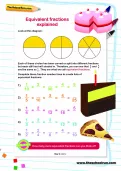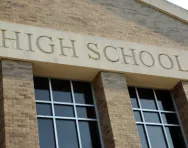Important update from TheSchoolRun
For the past 13 years, TheSchoolRun has been run by a small team of mums working from home, dedicated to providing quality educational resources to primary school parents. Unfortunately, rising supplier costs and falling revenue have made it impossible for us to continue operating, and we’ve had to make the difficult decision to close. The good news: We’ve arranged for another educational provider to take over many of our resources. These will be hosted on a new portal, where the content will be updated and expanded to support your child’s learning.
What this means for subscribers:
- Your subscription is still active, and for now, you can keep using the website as normal — just log in with your usual details to access all our articles and resources*.
- In a few months, all resources will move to the new portal. You’ll continue to have access there until your subscription ends. We’ll send you full details nearer the time.
- As a thank you for your support, we’ll also be sending you 16 primary school eBooks (worth £108.84) to download and keep.
A few changes to be aware of:
- The Learning Journey weekly email has ended, but your child’s plan will still be updated on your dashboard each Monday. Just log in to see the recommended worksheets.
- The 11+ weekly emails have now ended. We sent you all the remaining emails in the series at the end of March — please check your inbox (and spam folder) if you haven’t seen them. You can also follow the full programme here: 11+ Learning Journey.
If you have any questions, please contact us at [email protected]. Thank you for being part of our journey it’s been a privilege to support your family’s learning.
*If you need to reset your password, it will still work as usual. Please check your spam folder if the reset email doesn’t appear in your inbox.
What is the equal preference system?

Whether you’re applying for a primary or secondary school place for your child, it can be tough deciding which schools to list on your application form, let alone in which order you should rank them.
In the past, some schools and local authorities operated a ‘first preference first’ system. Admissions authorities could prioritise those who had listed a school as their first choice on their application form. In practice, this meant that a child who lived some distance from a school but had made it their first choice could be offered a place above a child who lived nearer but had listed it as their second choice.


Boost Your Child's Learning Today!
- Start your child on a tailored learning programme
- Get weekly English & maths resources sent direct to your inbox
- Keep your child's learning on track
The Schools Admission Code outlawed the first preference first system. Admission authorities are now legally required to operate an ‘equal preference’ system. This means that places are offered purely on the strength of how well children fit the admissions criteria. Schools can’t favour children who listed the school as their first choice, nor rule out those who placed it lower down their list; in fact, they are not even told where they were ranked in your list of preferences.
The equal preference system was introduced to prevent admission authorities being able to give higher priority to children who listed a school as their first choice. This is particularly important where a school’s admission authority is the school itself – for example, foundation schools, where the governing body controls admissions – as they are no longer able to select pupils based on where they ranked the school.
How it works
- School applications open on different dates in different areas, usually near the beginning of the autumn term of the year before your child is due to start Reception for primary school places, and the beginning of the autumn term of Year 5 for secondary school.
- On the form, you will be asked to list your top choices of school in order of preference. You must be allowed to list at least three schools.
- After the closing date, the LA will put your child’s name on the list for each of the schools you have listed. Their position on the list will depend on how well your child fits the school’s admission criteria – for example, they may be higher up a school’s list if you live very near to it.
- The equal preference system means that at this stage, the order in which you ranked the schools will not be taken into account. Your child will be put on the list for every school you have applied to.
- Each school has a published admission number (PAN): the number of places it has to offer. The LA will mark up the names at the top of each school’s list, up to its PAN. This is known as the School List. Those children whose names fall outside the PAN will be placed on a waiting list.
- If your child’s name appears on only one School List, your child will be offered a place at that school, regardless of where it ranked in your preferences.
- If your child is on more than one School List, the LA will then take into account the order in which you ranked the schools on your common application form. Your child will be offered a place at the school that you ranked highest. This happens around March 1 for secondary places and April 16 for Reception places.
- If your child isn’t allocated a place at any of your ranked schools, the LA will allocate a place at the nearest school with a space.
- If you have been offered a school that wasn’t your first choice, your child will remain on the waiting list for any other schools that you ranked higher than the one they have been offered. If a vacancy then comes up because another child decides not to accept a place, the LA will allocate the place to the next child on the waiting list. You can find out where your child is on the waiting list by contacting the admissions authority: this is the LA for community schools and voluntary controlled schools, the academy trust for academies, or the governing body for foundation or voluntary aided schools.
Top tips for the equal preference system
Some parents think that if they have a very clear first choice of school, they should leave all their other options blank to show the admissions authority how strongly they feel. However, it’s important to list at least three choices, and ideally use all of your options. In some areas, around 50 per cent of children miss out on their first choice of school, and if you have only listed one, your child could be placed at any other school in the area that has space, regardless of your opinion of it. It’s important that your form includes at least one school, and preferably more, that you would consider as a reasonable alternative to your first choice.
Similarly, don’t be tempted to list the same school in every space on your application form. This won’t curry favour with the admission authority, and your application will only be counted once.








